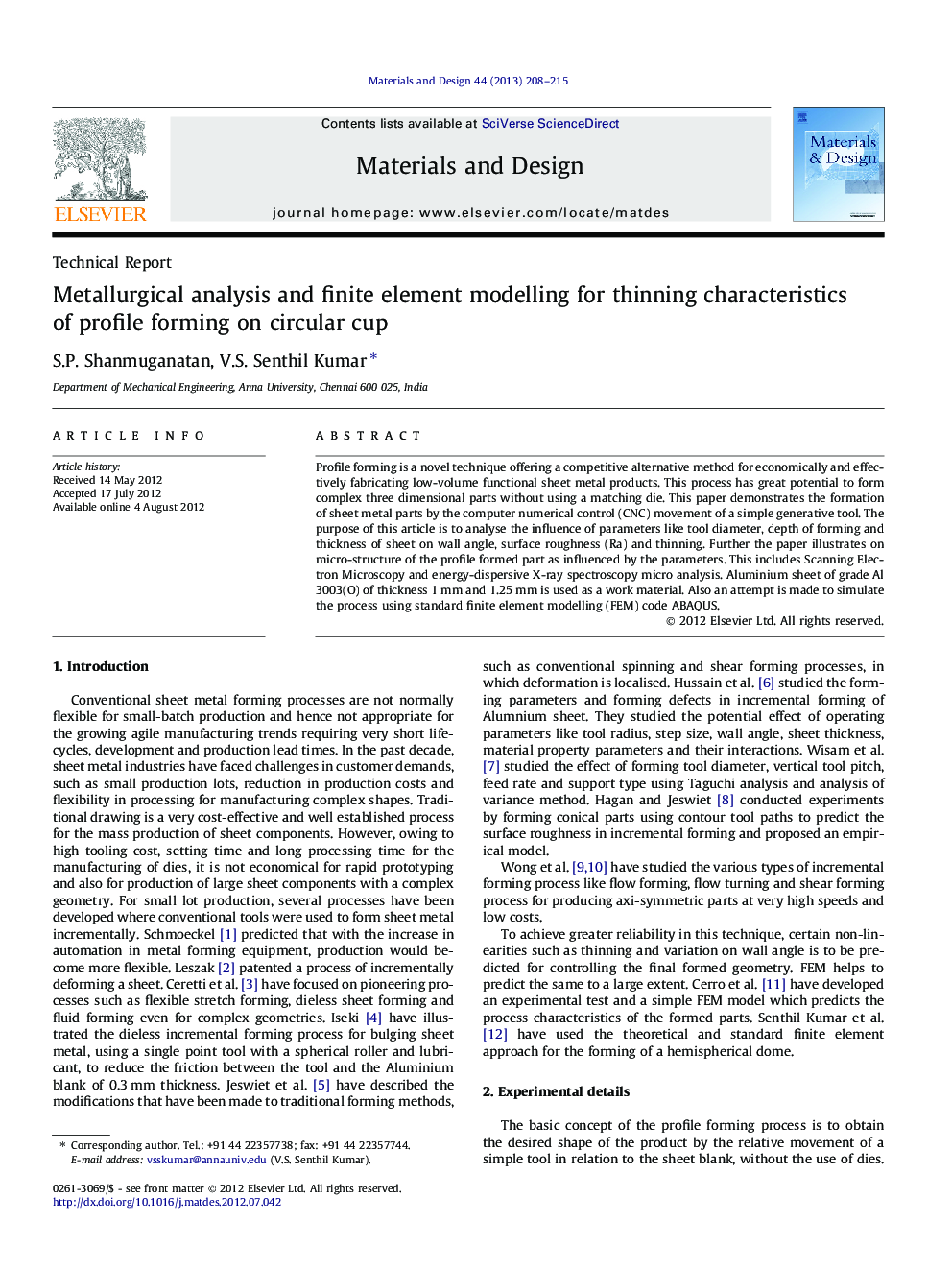| Article ID | Journal | Published Year | Pages | File Type |
|---|---|---|---|---|
| 830325 | Materials & Design (1980-2015) | 2013 | 8 Pages |
Profile forming is a novel technique offering a competitive alternative method for economically and effectively fabricating low-volume functional sheet metal products. This process has great potential to form complex three dimensional parts without using a matching die. This paper demonstrates the formation of sheet metal parts by the computer numerical control (CNC) movement of a simple generative tool. The purpose of this article is to analyse the influence of parameters like tool diameter, depth of forming and thickness of sheet on wall angle, surface roughness (Ra) and thinning. Further the paper illustrates on micro-structure of the profile formed part as influenced by the parameters. This includes Scanning Electron Microscopy and energy-dispersive X-ray spectroscopy micro analysis. Aluminium sheet of grade Al 3003(O) of thickness 1 mm and 1.25 mm is used as a work material. Also an attempt is made to simulate the process using standard finite element modelling (FEM) code ABAQUS.
► The wall angle decreases with an increase in the tool diameter and incremental depth. ► The wall angle increases with an increase in the sheet thickness. ► Surface roughness decreases with an increase in the wall angle and tool diameter.
